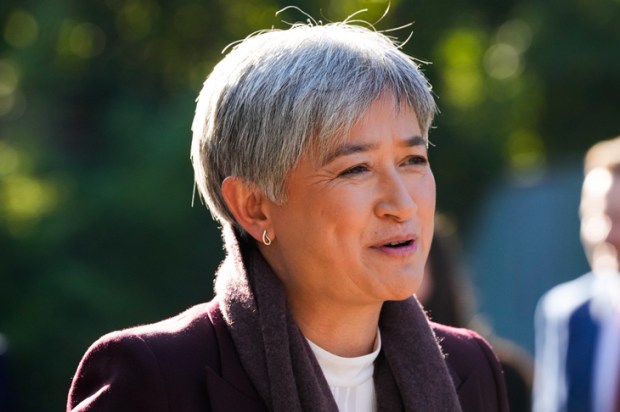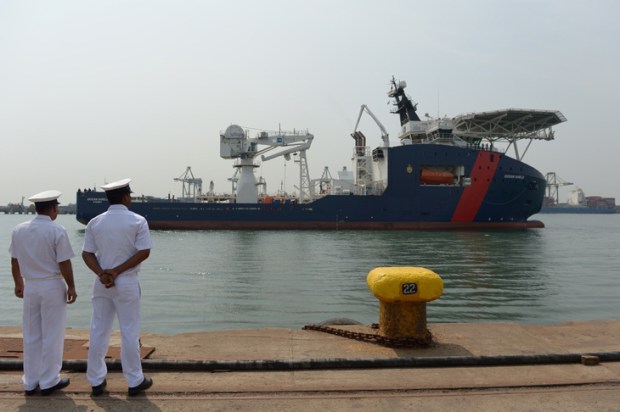For those who like their sport served with a side order of geopolitics and didn’t want to see the last great communist dictatorship score a public relations win, there was relief on the final day of the Olympic Games when the US beat China in the medal tally. While the rivals tied with 40 gold medals each, the US won because it collected 126 medals overall compared to China’s 91.
While US sporting prowess may be comforting to those who look to America as the ultimate guarantor of the free world, elsewhere China has been chalking up more consequential victories. For example, it now has the largest navy in the world, surpassing the US, with 234 operational warships. It also has the biggest shipyard and it is expanding both its navy and its merchant marine faster than any other nation since the second world war.
By contrast, US Navy shipbuilding is in ‘a terrible state’ hitting a 25-year low according to a naval analyst at the US Congressional Budget Office. The only bright spot in this bleak picture is that although China has the numerical advantage, the US still has the qualitative edge. Its 73 destroyers, the backbone of the fleet, allow the US to project power to a greater extent than China’s 42 destroyers.
But for how long? With unflinching determination, China is closing the gap. In the two decades to 2023 it more than doubled its destroyer fleet from 20 to 42 and has launched eight cruisers since 2017, whereas the US hasn’t launched any since 2016.
Just as well then that the US can sink an 820-foot, 39,000-ton ship by dropping a low-cost bomb from a stealth bomber as it demonstrated in Hawaii in July. The US said the capability answered an ‘urgent need to quickly neutralise maritime threats over massive expanses of ocean at minimal cost’. China’s Global Times denounced the display saying it was obviously aimed at China since it is the only country ‘deemed as an “enemy” by the US that operates a 40,000-ton amphibious assault ship’. Touché.
Over the last two years, the Russian invasion of Ukraine and Iran’s proxy wars of annihilation waged against Israel have been the focus of attention as has the treasure the US has expended in defence of its allies. It has given Ukraine US$175 billion in military aid since the 2022 invasion and US $12 billion in military aid to Israel since Hamas launched its attack last October.
Yet as far as the US Department of Defence (DoD) is concerned the main threat is China both because of its rapid militarisation and its increasingly aggressive behaviour. In only two years, between 2021 and 2023, it conducted more than 180 ‘dangerous’ intercepts of US aircraft, more than in the entire previous decade.
The practice continues. This week, the Philippines said two Chinese jets flew dangerously close to one of its planes over the South China Sea and released multiple flares in its path. The incident is remarkably similar to the Chinese jet that released flares in the pathway of an Australian Seahawk helicopter earlier this year and in the last two years a Chinese fighter jet released chaff in front of an Australian plane and a Chinese warship used lasers to interfere with another aircraft.
You don’t have to be a clairvoyant to see the advantage China is seeking with its military build up. It claims sovereignty over almost all of the South China Sea and simply ignored the 2016 ruling by the International Court of Justice in the Hague that its bogus historical claims lack legal foundation. Instead, it has twisted various provisions used to determine the borders of Exclusive Economic Zones to give a veneer of legality to its land and maritime grab claiming the Spratly Islands, the Paracel Islands, the Scarborough Shoal, and every reef, bank or rocky outcrop, visible or submerged, on which it can build a military outpost or an airport.
This policy has led China into conflict with numerous states including the Philippines, Japan, Vietnam, Indonesia, Malaysia and Brunei. The Philippines said this week that the actions of China’s air force were ‘reckless’ and ‘illegal’ and the US has pledged $500 million to aid the Philippines’ military and coast guard. A spokesperson for China’s foreign ministry retorted that the US has no right to intervene, and the Philippines ‘wooing other countries to provoke confrontation would only undermine regional stability’.
The more China menaces its neighbours, the more they seek safety in alliances. Last month, the US and Japan jointly criticised Beijing’s ‘provocative’ behaviour in the South and East China Seas, its joint military exercises with Russia, and the rapid expansion of its nuclear arsenal. Vietnam is building up it navy and its relations with Japan, the US and India. Last week Australia and Canada jointly expressed ‘strong opposition to destabilising or coercive actions in the South China Sea’ and signalled greater defence cooperation.
The Quad – the US, Japan, India and Australia – met in Tokyo last month to discuss Indo-Pacific security. It has been joined by the Squad – the US, Australia, Japan and the Philippines – and by Aukus – Australia, the UK and the US – all aimed at shoring up security and dealing with an ever more belligerent China.
Yet China doesn’t care. It’s land grab in the South China Sea has had a rich payday with Beijing confirming this week the discovery of gas field worth $15 billion seemingly located near the Paracel Islands that are occupied by China but also claimed by Vietnam and Taiwan.
This is where China’s military might comes into play. It simply doesn’t accept that it is bound by international law and is increasingly unafraid to ride roughshod over its neighbours. Xi is now calling for the building of strong border, sea and air defences to protect the country’s territorial sovereignty and maritime interests and according to the US, he has ordered his military to be ready to invade Taiwan by 2027.
Yet its not all going China’s way. Over the last three months, foreign investors have pulled out nearly $US 15 billion worried that tensions between China and the West might lead to the imposition of tariffs for example by the EU.
Into this geopolitical minefield wandered our former prime minister and prime panda hugger, the cantankerous Mr Keating who describes Taiwan as ‘Chinese real estate’ and accuses America of being a dangerous aggressor in Asia trying to ‘superintend’ China from the Atlantic.
It was too much for US Senator Nancy Pelosi who has always been outspoken in defence of Taiwan’s independence. Even if Mr Keating didn’t care about the dismantling of a democracy by a communist dictatorship, she was shocked that he failed to understand the economic importance of maintaining a free shipping route through the Taiwan strait. It was an eccentric performance that instantly went viral, somewhat reminiscent of Australia’s befuddled breakdancing academic performing her ‘inclusive’ kangaroo routine. No points for Mr Keating, but one last gold for Ms Pelosi and Team USA.
Got something to add? Join the discussion and comment below.
You might disagree with half of it, but you’ll enjoy reading all of it. Try your first month for free, then just $2 a week for the remainder of your first year.













